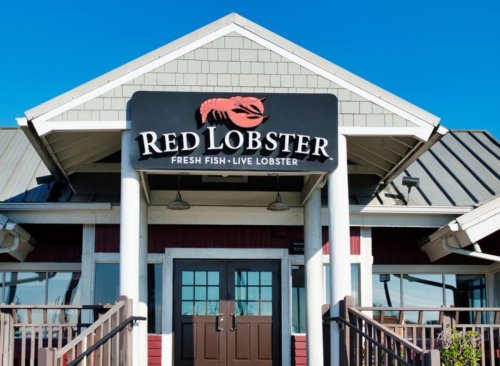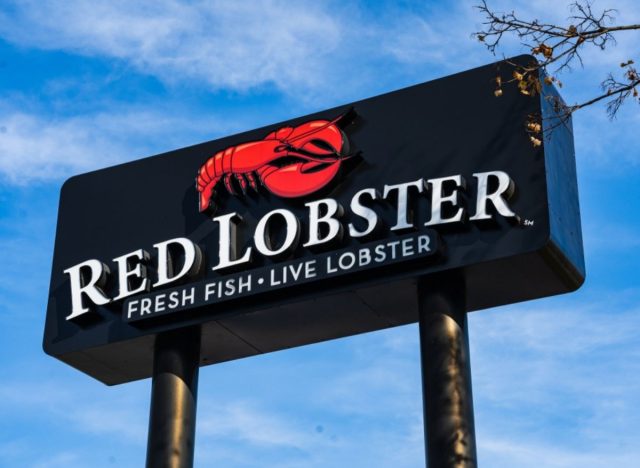Why Are So Many Restaurant Chains Closing Locations? Understanding The Industry Shift
The aroma of sizzling burgers, the comforting clatter of plates, the familiar jingle of a fast-food commercial – for decades, restaurant chains have been a cornerstone of American dining. They’ve offered convenience, consistency, and a go-to spot for everything from a quick lunch to a family dinner. However, in recent years, a noticeable shift has occurred. Many of these beloved chains, from fast-casual innovators to traditional sit-down establishments, are quietly, and sometimes abruptly, shutting down locations across the country. What's driving this significant wave of closures, and what does it mean for the future of dining?
The Widespread Impact: A Glimpse at the Numbers
It's not just a few isolated incidents; the trend of restaurant chains closing locations is widespread and affects some of the biggest names in the industry. Data from various sources paints a clear picture of an industry in flux:
- Subway, a ubiquitous presence in the fast-food landscape, quietly shuttered more than 600 restaurants in 2024 alone. This adds to a staggering loss of approximately 7,600 locations over recent years, indicating a massive downsizing effort to stay afloat.
- Denny’s, a classic American diner chain, shut down 88 low-performing locations, signaling a strategic move to consolidate and improve profitability.
- Even seemingly stable brands like Hooters have faced sudden challenges, abruptly closing more than 30 company-owned restaurants across several states, despite previous assurances during bankruptcy proceedings.
This isn't just about individual struggles; it reflects a broader industry trend. An extensive review of chain restaurants revealed that 265 locations never fully recovered from previous downturns, leading to their eventual closure. According to data from Technomic Top, several chains pulled back significantly last year, based on the percentage of their total U.S. unit count, highlighting a widespread contraction.
Who Is Feeling the Heat? A Segment-by-Segment Look
The closures are not confined to a single type of restaurant. The challenges are impacting a diverse range of dining experiences:
- From Fast Casual to Family Dining: Iconic names like Red Lobster and even fast-casual favorites such as MOD Pizza have been cited among top U.S. restaurant chains closing or planning closures in the near future.
- Traditional Sit-Down Restaurants: This segment seems particularly vulnerable. Major chains including TGI Fridays, Outback Steakhouse, and Applebee's have all cited “underperformance” as a primary reason for closing certain locations. Chains like On The Border Mexican Grill & Cantina are also feeling the growing challenges that are unique to full-service, sit-down dining.
- Fast-Food Giants: While often seen as resilient, even fast-food favorites are downsizing. Beyond Subway, Wendy's may be one of the top fast-food chains that have downsized the most locations in 2024, demonstrating that no segment is immune.
The trend shows that from fast-food favorites to casual dining restaurants, some of the nation’s most iconic food chains have shuttered locations this year, indicating a deep-seated shift across the entire industry.
The Underlying Reasons Behind the Decline
So, what exactly is fueling this widespread phenomenon? The reasons are complex and multifaceted, often a combination of economic pressures, evolving consumer habits, and strategic realignments:
Financial Pressures and Lagging Sales
A recurring theme cited by many chains is "underperformance" and "lagging sales." This can stem from a variety of factors, including increased competition, a saturated market, or simply a decline in customer foot traffic. When locations aren't meeting revenue targets, they become a financial burden, leading to closures. Financial pressures are a significant driver, forcing many businesses to consolidate or cut losses.
Shifting Consumer Demand
Consumer preferences are constantly evolving. There's a growing demand for healthier options, more diverse cuisines, and unique dining experiences. Many traditional chains, especially those that haven't innovated their menus or atmosphere, struggle to keep pace with these changing tastes. The rise of meal kits, grocery delivery, and a renewed focus on home cooking also impacts the frequency with which people dine out.
Rising Operating Costs
The cost of doing business has skyrocketed. Rent, labor, and food prices have all seen significant increases. One chain, for example, is shuttering several locations throughout California, specifically citing a rising cost to do business in the state, even while locations in nearby states remain open. These increased operational expenses eat into profit margins, making it unsustainable to keep underperforming locations open.
Post-Pandemic Recovery Challenges
The COVID-19 pandemic delivered a massive blow to the restaurant industry, and for many locations, full recovery has been elusive. As mentioned, hundreds of locations never fully recovered, indicating that the lingering effects of lockdowns, staffing shortages, and altered consumer behavior continue to impact their viability. Restaurant Brands International, the parent company of Burger King and Popeyes, for instance, is hitting pause on its normally fast-paced growth, planning instead to identify and close "several hundred" locations that aren't performing optimally in the post-pandemic landscape.
Strategic Realignment and Consolidation
Sometimes, closures are part of a larger strategic plan. Companies may decide to shed underperforming units to strengthen their overall brand and focus resources on more profitable locations or new growth areas. This can be an effort to "stay afloat" by becoming leaner and more efficient, as seen with Subway's massive downsizing.
The Future of Restaurant Chains
While the headlines about closures can seem grim, they also represent a period of significant adaptation and evolution for the restaurant industry. Chains that are surviving and even thriving are often those that are agile, innovative, and responsive to consumer needs. This might involve:
- Investing in technology for online ordering and delivery.
- Revamping menus to include healthier or more diverse options.
- Redesigning dining spaces to offer a more modern or unique experience.
- Optimizing their real estate footprint by closing underperforming stores and focusing on high-traffic, profitable locations.
The closures are a harsh but necessary process of natural selection, weeding out the less adaptable and making way for new concepts or more resilient business models.
In Conclusion
The landscape of restaurant chains is undoubtedly undergoing a significant transformation. From fast-food giants like Subway and Wendy's to casual dining staples such as TGI Fridays and Applebee's, many are closing locations due to a confluence of factors: underperformance, rising operational costs, shifting consumer demands, and the lingering impacts of the pandemic. This wave of closures is not merely a sign of decline but also an indicator of an industry in the process of adapting and reinventing itself. While some beloved spots may disappear, this period of contraction is ultimately shaping a more resilient and responsive restaurant industry for the future, one that must continually innovate to meet the evolving tastes and demands of its customers.

5 Restaurant Chains Closing Locations In 2023 | Flipboard

5 Restaurant Chains Closing Locations In 2023 – Internewscast Journal

Restaurants Chains Closing Locations